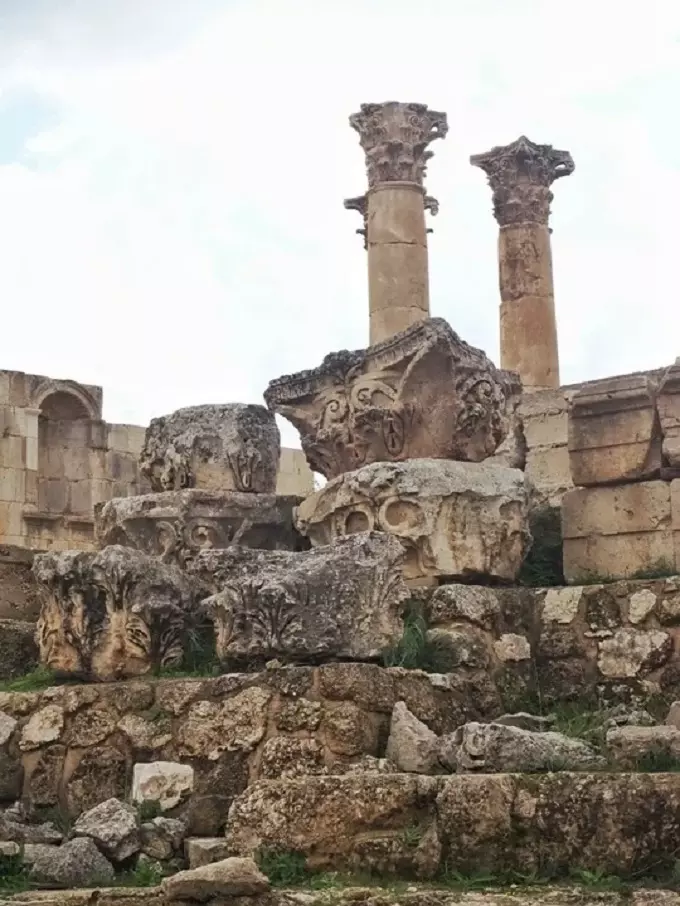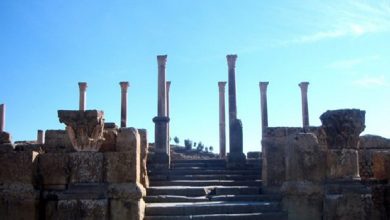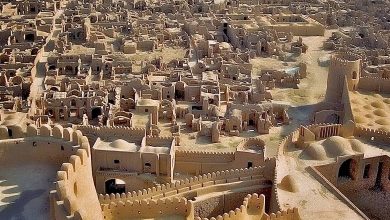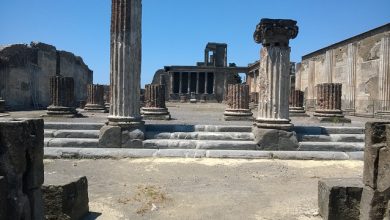The ancient city of Jerash

Those who have read the Bible not only religiously but also historically probably remember the New Testament texts that speak of Decapolis (the tent city) where Jesus once preached. Why there? Because most of the population of those cities at that time were Gentiles, whom Jesus was calling to believe in one God. Most of his teaching was directed at the Jewish minority. Also, according to the biblical texts, it was there that Jesus encountered a herd of 2,000 pigs, which left him shocked because it is forbidden by kashrut.
At that time, the Decapolis consisted of 10 cities independent of each other, but all had a similar Semitic culture and language (based on Nabataean, Aramaic, and Hebrew culture). Damascus (Syria), Philadelphia (Amman, Jordan), Raphana (Abila, Jordan), Scythopol (Beit Shean, Israel), Gadara (Jordan), Hippos (Israel), Dion (Jordan), Pella (Jordan), Gerasa (Jerash, Jordan), Kanata (Syria).
So far, only a couple of sites have been excavated, though the excavations are slowly but surely still going on. One such excavated city is Gerasa or Jerash. In antiquity, Gerasa was a developed and bustling commercial city; today, it is simply a historical park with ruins not far from the modern city of Jerash.
At that time, Gerasa (along with Petra and Palmyra) was considered a rich, influential and successful city. A major earthquake in 749 AD destroyed most of Gerasa. The ruins of Gerasa remained underground for hundreds of years until they were discovered by the German Orientalist Ulrich Setzen in 1806. It was then that the first excavations began.

However, in 1878, Circassian Muslim refugees from Tsarist Russia, at the behest of Ottoman Sultan Abdul Hamid II, settled in the valley and began to steal stones from the excavations to build their homes.
In general, excavations continued throughout the 20th century, and were carried out by archaeologists from Britain, Germany, and the USA. In 1907, the Germans were lucky again, for they found a Roman mosaic depicting mythological scenes, which they successfully took and transported to the Pergamon Museum in Berlin, where it is preserved to this day.
Today Gerasa is considered one of the largest and most well-preserved ancient cities in Greco-Roman architecture. The city is considered to be at its peak in the 3rd century AD when it became part of the Roman colony. At that time, the city’s population was 20 thousand people. Like Petra, Jerash survived because it was completely buried by the sands.
Today, in addition to numerous columns, a couple of temples, a hippodrome, a square, and the remains of fountains can be seen here.
One of the best-preserved structures is the Arch of Hadrian, which was built on the occasion of a visit by Emperor Hadrian in 129 AD. Behind the arch is a hippodrome with a capacity of 15 thousand people. Chariot races, sports competitions, and carriages stopped here.

The northern theater was built in 165 AD and was half the size of the southern one. However, in the 5th century, it was no longer in active use, and the locals pulled it up and stacked it for other buildings.
On the other hand, the southern theater is almost in perfect condition. It was built in 90-92 AD and could seat over 3000 people. The main feature of the theater is the excellent acoustics, which allows any seat in the audience to hear the speaker, who stands in the middle of the stage. The speaker doesn’t even have to raise his voice! We checked it out, and it really works!!!
Another unique structure is the forum, or oval square, which is located in the center of the city.
From south to north runs a straight street, Cardo Maximu, which is paved with blocks on which are imprinted the traces of ancient chariots. There was also an underground sewer system under this street, into which the sewage of the rainwater flowed; not all cities could boast such progress at that time.

There are also the ruins of the Temple of Artemis, the Cathedral, and the Church of St. Theodore.
The Cathedral and the Church of St. Michael are separated by a huge fountain dedicated to the Nymphs. Even today, it looks very imposing and, at that time, amazed everyone with its beauty.
Today, however, you can no longer see the marble linings, the plaster ornaments, and the seven statues of lion heads through which streams of water rushed down into the small pool.




